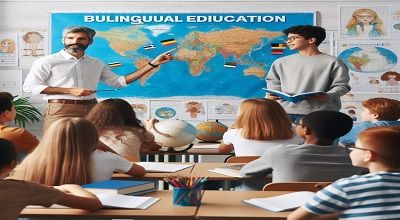Teaching in Bilingual Education
Teaching in bilingual education setting can be both challenging and rewarding. Here are some key aspects to consider:
- Understanding Bilingual Education Models: There are various models of bilingual education, such as transitional bilingual education, dual language immersion, and two-way immersion. Each model has its own goals and methods, so it’s important to understand the specifics of the model you are working within.
- Language Proficiency: Teachers in bilingual education often need to be proficient in both languages being taught. This includes not just conversational fluency but also academic and technical language proficiency.
- Cultural Competence: Bilingual education is not just about language, but also about culture. Being culturally competent and sensitive to the backgrounds of your students is crucial. This helps in creating a more inclusive and effective learning environment.
- Curriculum Development: Developing a curriculum that effectively integrates both languages can be challenging. It’s important to balance the two languages in terms of exposure and content, ensuring that students develop skills in both languages.
- Differentiated Instruction: Students in bilingual settings may vary widely in their language abilities. Differentiated instruction, which involves tailoring teaching methods and materials to different learning needs, is particularly important in these settings.
More read…
- Assessment Practices: Assessing students’ proficiency in both languages and their academic content knowledge requires specialized approaches. Understanding how to effectively and fairly assess bilingual learners is key.
- Parent and Community Involvement: Engaging with parents and the community is especially important in bilingual education. Parents can be valuable resources in supporting their children’s language development and cultural understanding.
- Professional Development: Ongoing professional development is vital for teachers in bilingual settings to stay informed about best practices in bilingual education, language acquisition, and cultural competency.
- Technology Integration: Utilizing technology can aid in language learning and engagement. Interactive and multimedia tools can cater to different learning styles and enhance language acquisition.
- Advocacy: Bilingual educators often find themselves advocating for their students and programs. Understanding the political and social dynamics surrounding bilingual education can help in this advocacy.
Final Words
Finally, the goal of bilingual education is not only to teach another language but to foster bilingualism and biliteracy, enhancing students’ understanding of different cultures and preparing them for a multilingual and globalized world.
